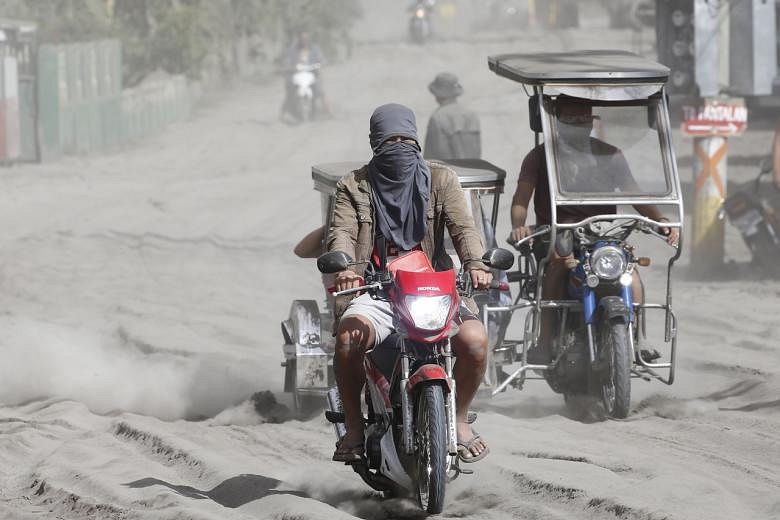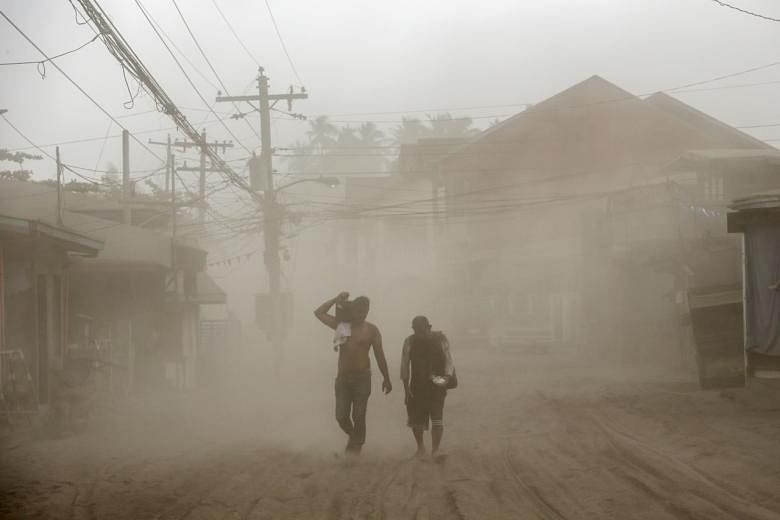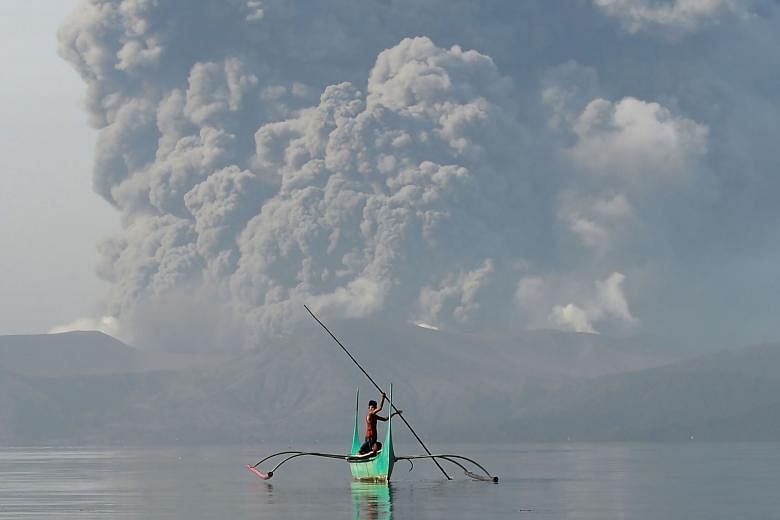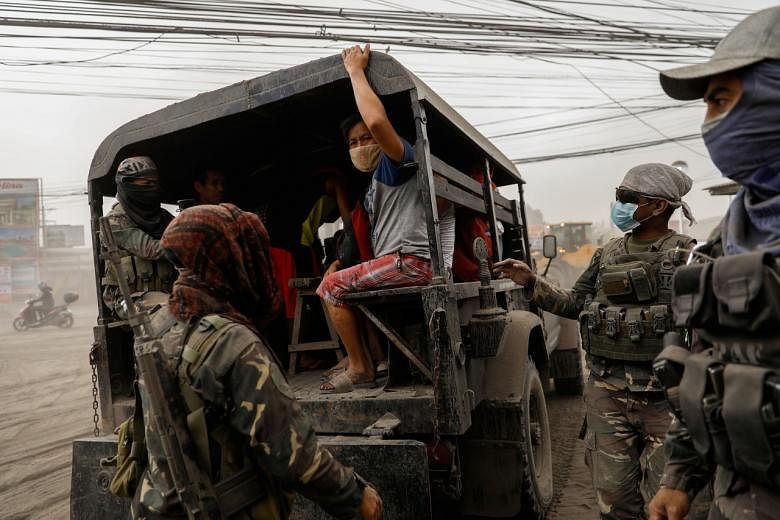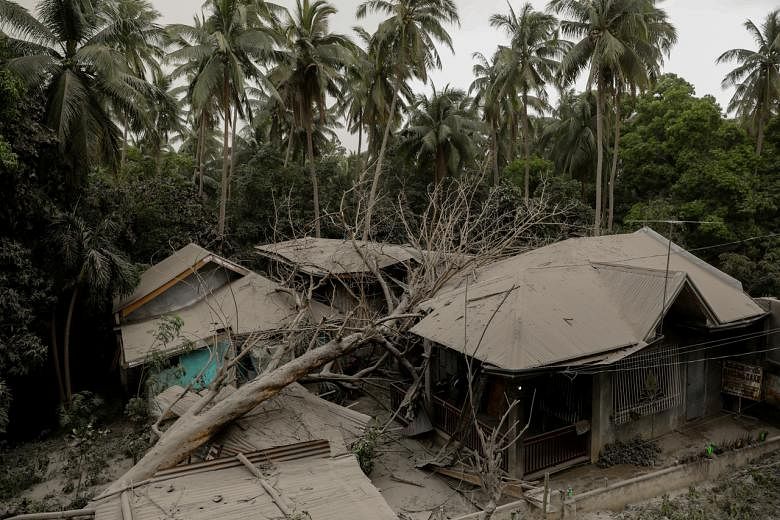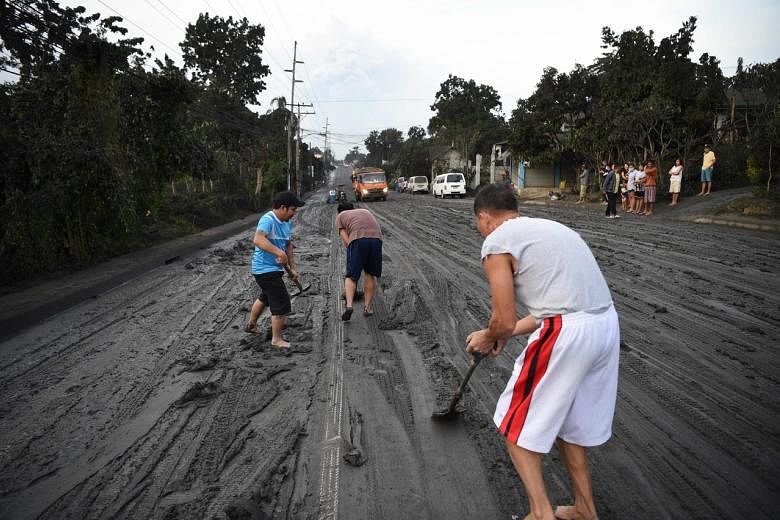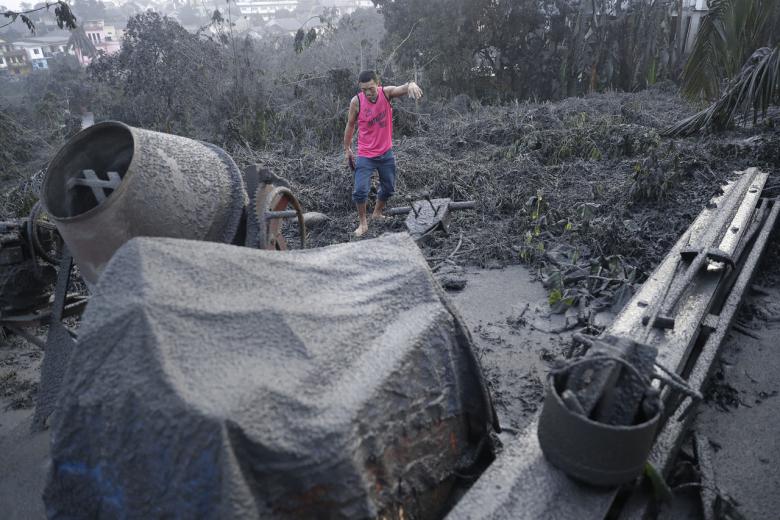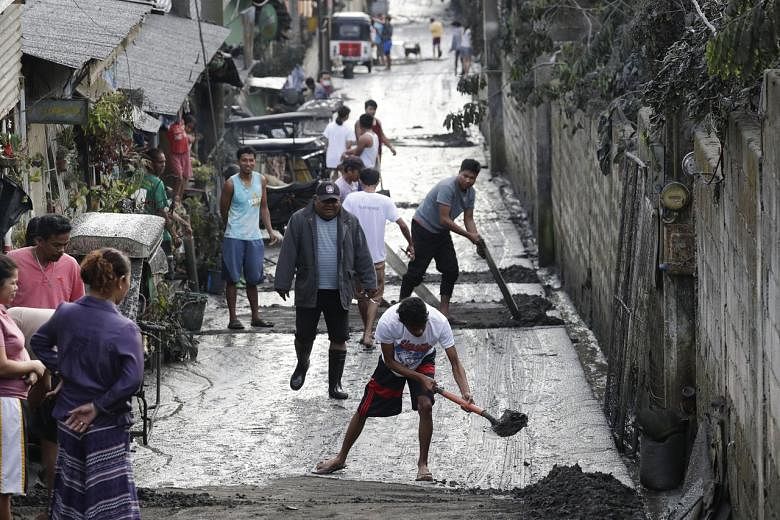TAGAYTAY (REUTERS, AP) - Flight operations at the Philippines' main international airport partially resumed on Monday (Jan 13) as authorities warned that a "hazardous eruption" was possible anytime.
Partial operations resumed by 0200 GMT (10am Singapore time) for departures and 0400 GMT for arrivals at the Ninoy Aquino International Airport (NAIA) after it was closed from Sunday following the emission of a massive column of ash at the Taal volcano south of the capital.
In a joint statement, the Department of Transportation, Manila International Airport Authority and Civil Aviation Authority of the Philippines said flight arrivals would, however, be subject to slot availability.
Departures would be prioritised to clear the airport ramps of planes parked there since Sunday night, they said.
Red-hot lava gushed out of the volcano on Monday after a sudden eruption of ash and steam that forced villagers to flee and shut down Manila's international airport, offices and schools.
An alternative airport north of Manila at Clark Freeport remained open but the authorities would shut it down too if ashfall threatens flights, the Civil Aviation Authority of the Philippines said.
There were no immediate reports of casualties or major damage from Taal volcano's eruption that began on Sunday.
But clouds of ash blew more than 100km north, reaching the bustling capital, Manila, and forcing the shutdown of the country's main airport, with more than 240 international and domestic flights cancelled so far.
Dust masks sold out in stores as the authorities warned locals that the ash could cause respiratory problems, especially in the very young and those with pre-existing lung conditions.
The government's disaster-response agency reported that about 8,000 villagers have moved to at least 38 evacuation centres in the hard-hit province of Batangas and nearby Cavite province, but officials expect the number to swell, with hundreds of thousands more being brought out of harm's way.
Some residents could not move out of ash-blanketed villages due to a lack of transport and poor visibility. Some refused to leave their homes and farms, officials said.
"We have a problem, our people are panicking due to the volcano because they want to save their livelihood, their pigs and herds of cows," Mayor Wilson Maralit of Balete town told DZMM radio.
"We're trying to stop them from returning and warning that the volcano can explode again anytime and hit them."
Mr Maralit, whose town lies along the coastline of Taal Lake surrounding the erupting volcano, appealed for troops and additional police to be deployed to stop distraught residents from sneaking back to their high-risk coastal villages.
After months of restiveness that began last year, Taal suddenly rumbled back to life on Sunday, blasting steam, ash and pebbles up to 10 to 15km into the sky, according to the Philippine Institute of Volcanology and Seismology.
By early Monday, "fountains" of lava had been spotted on Taal, the institute said.
Stunning lightning shows have periodically played out above the volcano in a little-understood phenomenon that is attributed to static electricity.
The government volcano-monitoring agency raised the danger level around Taal three notches to level four, indicating "an imminent hazardous eruption".
Level Five, the highest, means a hazardous eruption is under way and could affect a larger area with high-risk zones that would need to be cleared of people, said Dr Renato Solidum, who heads the institute.
Ms Antonio Bornas, the agency's chief volcanologist, said lava spurted out in fountains from the volcano early on Monday while its ash and steam ejections eased.
It is hard to tell when the eruption would stop, she said, citing Taal's similar restiveness in the 1970s that lasted for about four months.
"We have detected magma. It's still deep, it hasn't reached the surface. We still can expect a hazardous eruption any time."
With the steam and ashfall easing on Monday, some residents began to shovel away the few inches of ash that covered everything from homes to cars and trees in Tagaytay, a popular upland resort city on a ridge that overlooks the picturesque volcano in the middle of a crater lake.
Usually bustling with traffic and tourists, many of Tagaytay's restaurants and coffee shops were closed, its main road covered in volcanic filth and mud.
The volcanology institute reminded the public that the small island where the volcano lies is a "permanent danger zone", although fishing villages have existed there for years.
It stressed the "total evacuation" of people on the volcano island and coastal areas "at high risk to pyroclastic density currents and volcanic tsunami within a 14km radius from Taal".
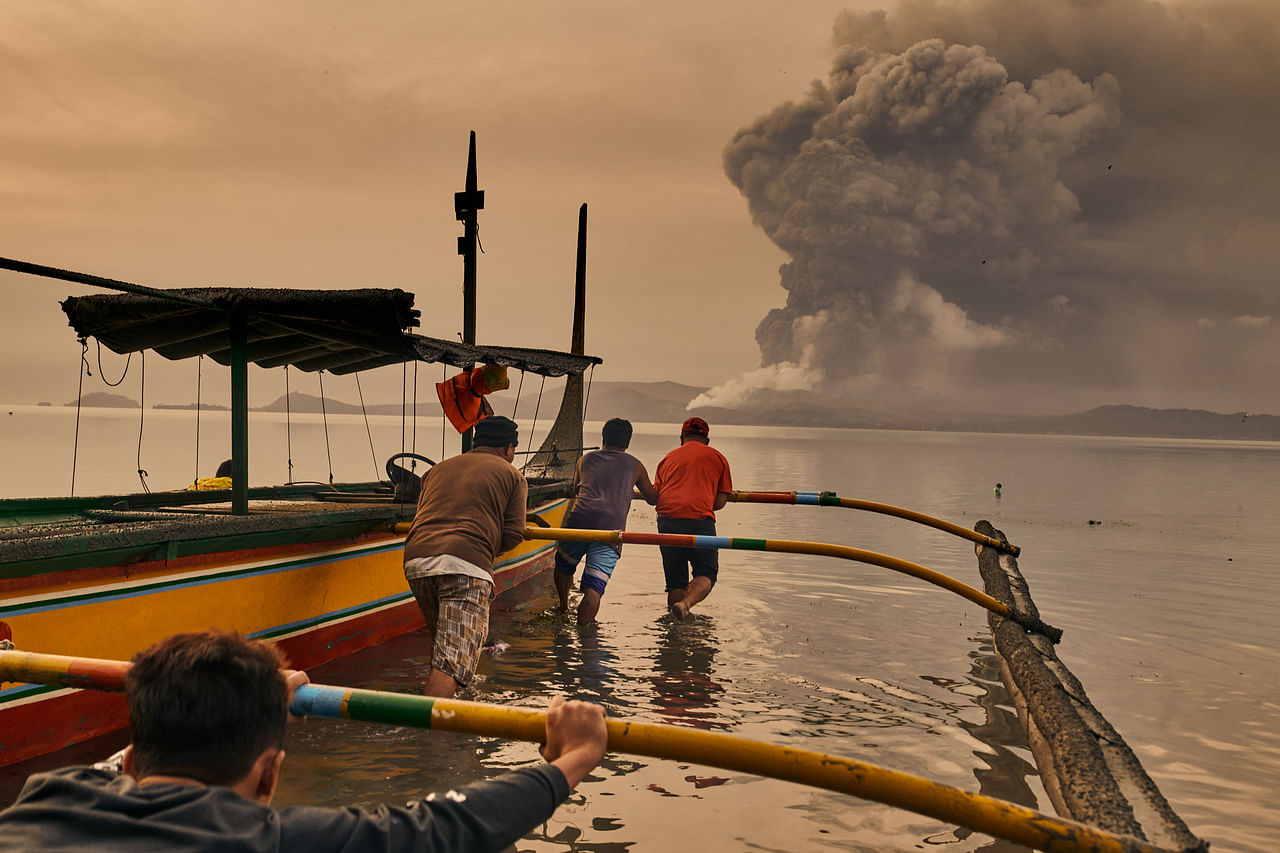
Aviation officials must advise airplanes to avoid flying at a certain distance from the volcano, "as airborne ash and ballistic fragments from the eruption column pose hazards to aircraft", it said.
The authorities continue to detect swarms of earthquakes, some of them felt with rumbling sounds, and a slight inflation of portions of the 311m volcano, officials said, and advised residents to stay indoors and wear masks and goggles outdoors.
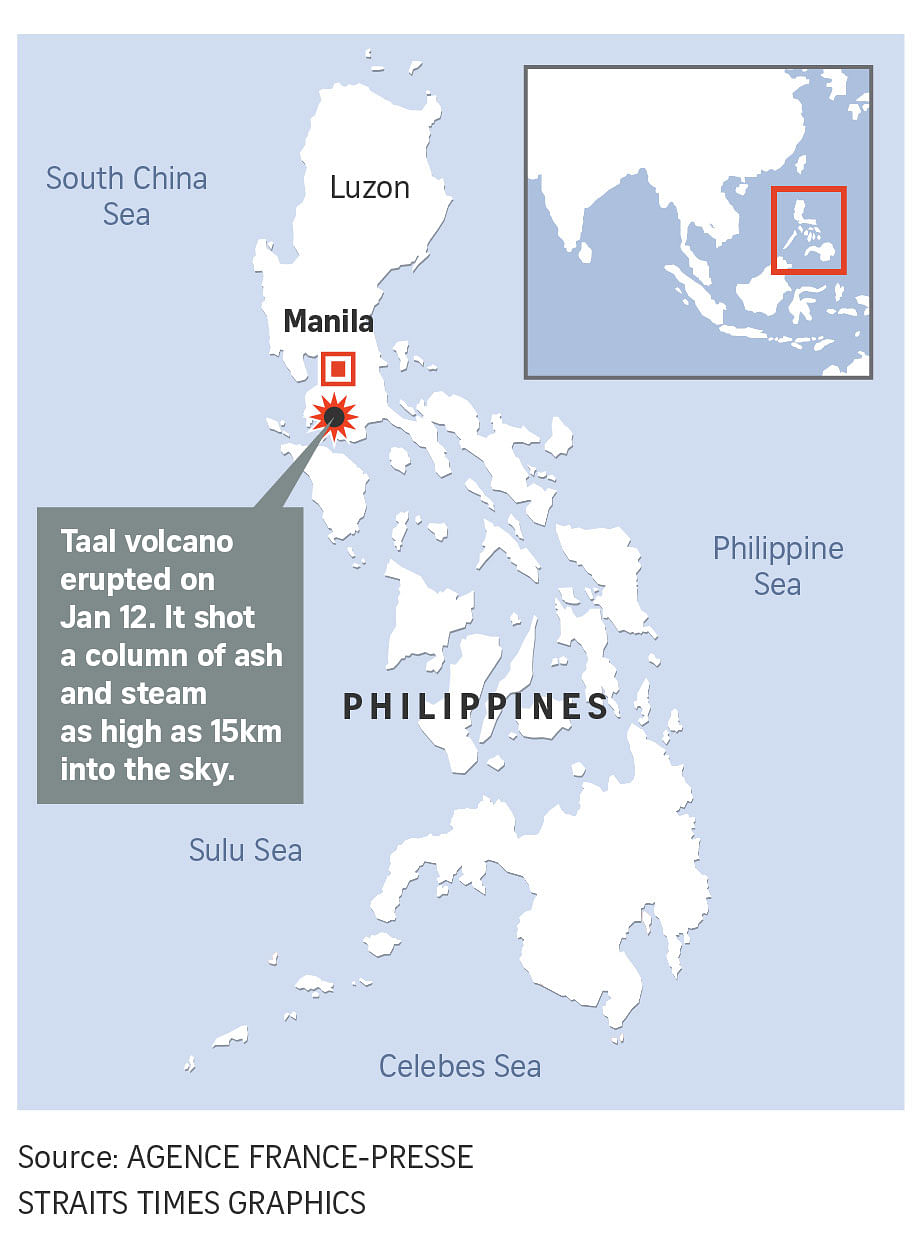
Government work and classes in schools in a wide swathe of towns and cities were suspended on Monday, including in Manila, to avoid health risks posed by the ashfall.
One of the world's smallest volcanoes, Taal is among two dozen active volcanoes in the Philippines, which lies along the so-called Pacific Ring of Fire, a seismically active region that is prone to earthquakes and volcanic eruptions.
Each year, about 20 typhoons and other major storms also lash the Philippines, which lies between the Pacific and the South China Sea, making it one of the world's most disaster-prone countries.
